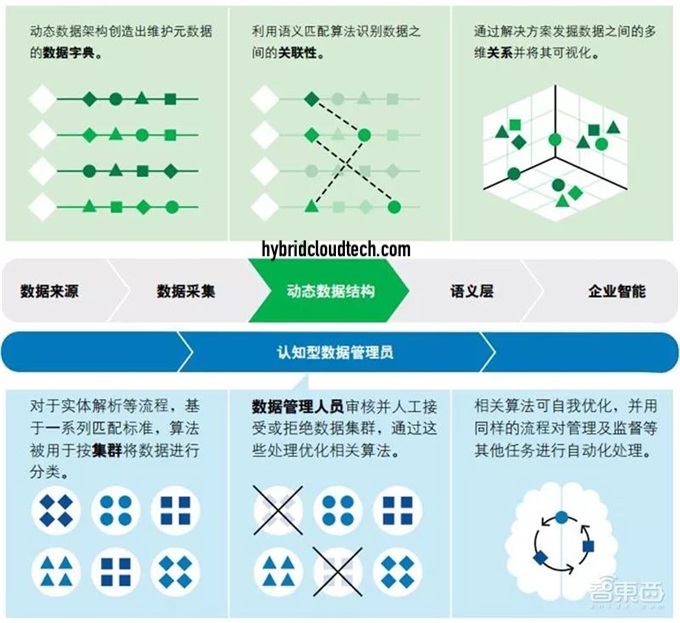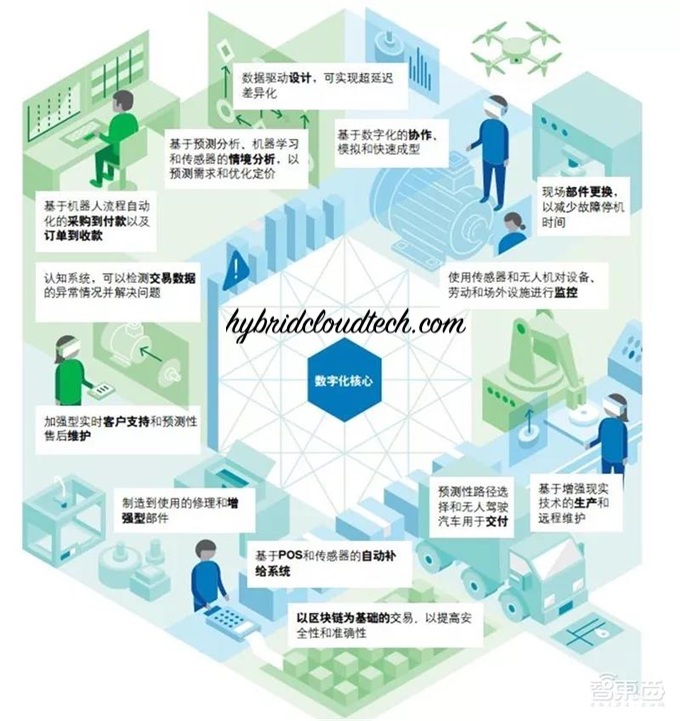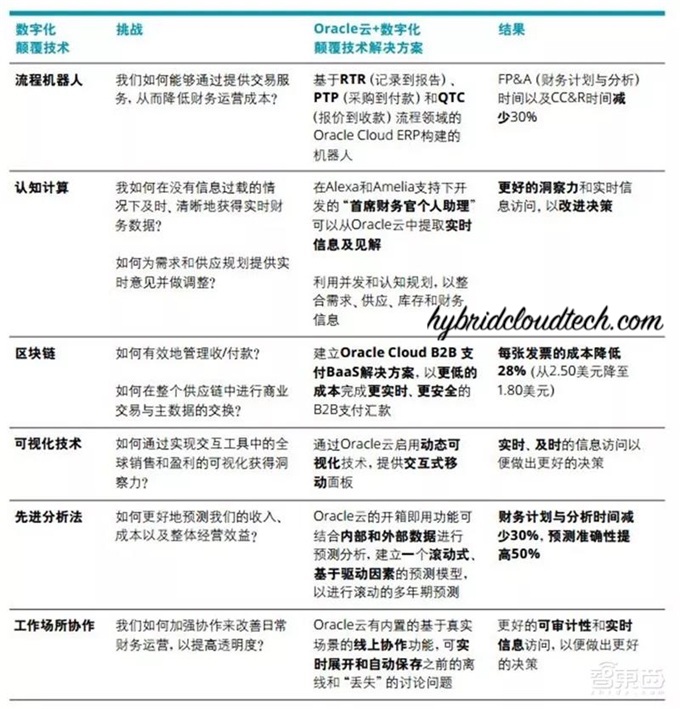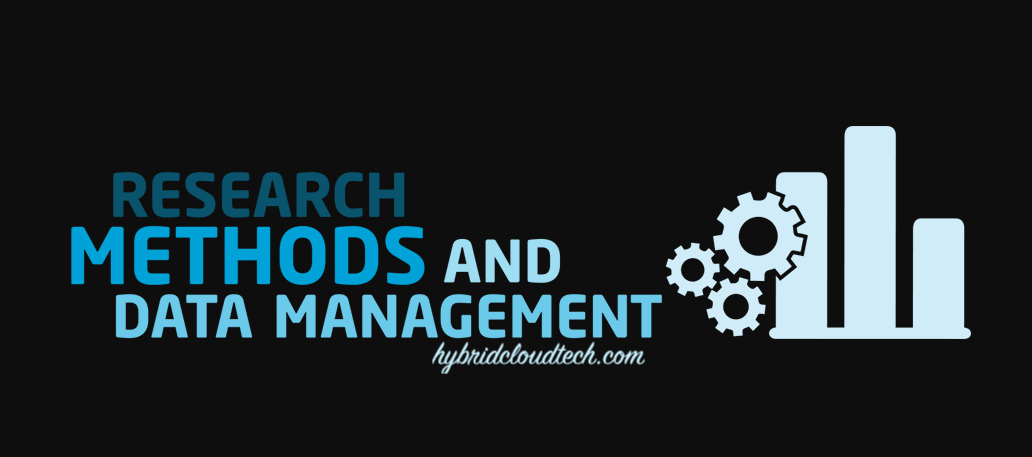The information needs of companies for big data, real-time reporting and automation change their data management methods. Enterprises are shifting from using traditional data warehouses, operational data storage, and structured data visualization tools to a model that combines predictive analysis, AI, natural language processing, and sensor data as their core data structure. Nowadays, data is the strategic asset of enterprises, and enterprises adopt modern methods to manage and analyze data.
Enterprise-wide data management and advanced analysis platforms (such as Oracle Analytics Cloud) can bridge the gap between traditional analysis and advanced analysis. Such platforms are ubiquitous and are accelerating the value creation process of enterprises.
Users also use specialized tools such as Oracle Data Visualization to explore and discover various trends to gain new insights. For example, when marketing managers hold online marketing activities on social media, they can obtain real-time streaming updates of conversion rates.
In the past 20 years, most of the master data solutions we have used are joint systems with master data sets and independent working data sets. The process of reconciling the master data set and the working data set is endless, and data management rules must be completed before deployment.
Companies are gradually abandoning joint models and manual processes, and instead use advanced data management toolkits including natural language processing, dynamic data mining and ontology, as well as advanced machine learning and cognitive functions.
These advanced systems seldom require pre-established rules, and can use self-learning to deal with complex situations and keep the internal and external ecosystems in line with regulatory compliance.

Unleash the digital potential at the core of business operations
Today, people are concerned about how cloud technologies, cognitive technologies, and other digitally disruptive technologies are reflected in the market: Individually and as a whole, these technologies can support new customer experiences, product innovation, and industrial ecosystem reshaping.
However, the disruptive potential of such technologies in core back-office and middle-office systems and business operations is often overlooked, and digital technology can completely change the way in which these systems and operations work. This transformation should start with finance and supply chain, both of which are the footholds for enterprises and structures to fully carry out digital transformation.
After that, the next generation of transaction and financial systems, blockchain, machine intelligence, automation and the Internet of Things will reshape all key functional departments.
For many people in the industry and technology fields, the word digitization always reminds people of marketing, e-commerce, and omni-channel experiences that are getting more and more attention from companies and investors.
At present, it is not surprising that various industries and fields plan to increase the level of digital participation in customers, patients, residents and business partners.
Although far-sighted companies are approaching their digital goals from multiple angles, they still need to pay attention to a long-standing issue, namely the interconnectivity of front-end and back-end systems.
CIOs realize that only when the new digital system is deeply connected to the core of the enterprise can the transformation of the front-end system make greater progress. Such key links facilitate sales and customer service to obtain pricing, product supply, logistics, quality, finance and other core corporate information that resides in the core system.
Establishing links between corporate functions and the core is a sign of progress, but in terms of opportunities, this is just a scratch. After the digital revolution, most of the core’s full potential remains to be tapped.
The reason? This is because very few companies have extended their digital goals from customer-oriented functional departments to middle office and back-office departments.
Related Posts
- Digital Transformation: Future of Enterprises | Predictions | Challenges
- Enterprise Applications Provide advanced Experiences for Digital Reality Features
- Digital Transformation: From a single blockchain to a combination of blockchains
- API Applications are Imperative in Communication Technology
- Internet of Everything (IOE) New Business Model WiFi
- 3 Driving Forces of Enterprise Digital Transformation
- Analysis of 5G Edge Computing & New Infrastructure
- 5 Real Opportunities of Digital Reality Technology
- Edge Computing Business Model Value Chain
To change the situation in the next 18 to 24 months, CIOs, CFOs, and supply chain leaders began to develop new digital functions for their core systems.
We are not here to use simple solutions or configure digital add-ons, but focus on how to integrate new cores of automation, analysis technology, real-time analysis and reporting, and interconnection technology into the construction system and process, so as to completely change the way of working.
The new core trend reflects in many ways that other corporate functions (such as human resources, sales and marketing) are already carrying out digital transformation. Although the strategies and milestones of each functional department are different, these departments share the same vision-symbiosis and win-win, build a large ecosystem, and work together to reshape the enterprise.
Digital transformation seems familiar. Digital processing of core business processes is not new. In the past 20 years, many companies have invested in ERP system implementation, mass customization systems, business process outsourcing, and other innovative fields.
Some of these investments have already brought tangible benefits-such as standardization of work processes and automation of tasks. However, other inputs have unconsciously caused side effects: the employee user experience is not intuitive enough, the operation process is rigorous and rigid, the data visibility is limited, and in some cases the necessary changes are too costly or difficult to achieve. Lead to stagnation of operations.
After completing some of the above-mentioned projects and some one-time deployment of the latest digital tools, some companies began to notice the fatigue of core systems, which will be exacerbated by the complexity of aging mission-critical solutions.
At the same time, CXOs and business department leaders are trying to reconcile two seemingly contradictory realities: On the one hand, they believe that the rapid development of technology is beneficial to business operations; on the other hand, they are increasingly skeptical of one-time technology deployment .
The new core trend helps to stimulate their all-round thinking mode. This trend will continue to intensify in the next few months, and it is expected that chief executives will lock in core business areas such as finance and supply networks to make substantial changes.
They will extensively explore how digital technologies can support global ecosystems, platform economies, complex operating networks, and new ways of working in the future, instead of focusing on decentralized tasks or individual tools.
But this is not to say that individual technology is irrelevant. Such technologies can become a key driving factor in achieving the ultimate vision. For example, the distributed ledger technology of the blockchain provides a method for asset exchange based on open and secure protocols, which will have a beneficial impact on trade finance, supply chain verification processes, and other areas.
But the blockchain itself is only one component in the new core stack of dynamic interconnection. When an enterprise embarks on its core construction journey, it is crucial to understand how digital innovation can combine existing functions to drive enterprise value.

Modern enterprise applications form a new core
As leading ERP software providers (such as Oracle) increasingly adopt/provide disruptive technologies (such as blockchain, IoT integration, social media integration, RPA, cognitive technology, etc.), the CIO and corporate interests People can establish and reshape their middle and backstage connections in a wider range. Cloud technology can bring greater agility, more automation opportunities, and greater flexibility, thereby increasing the value of these technologies through ERP systems.
Many companies are building a modern ERP platform as the basis for the new core, and using this platform to support blockchain, cognitive technology, RPA and other digital transformation enablers. Compared with those who are only “waiting for the maturity of technology”, these companies have increasingly higher work efficiency and competitiveness.
Compared with the digital transformation opportunities initially deployed by most enterprises, modern Oracle-ERP cloud applications bring more digital transformation opportunities, and the speed of technological innovation is increasing.
Companies that are waiting to die are losing this digital core competition step by step, which in turn affects their market competitiveness and employee attractiveness / retention. If more investment and energy are invested in outdated core systems and processes, costs will inevitably increase in the process of catching up with contemporary technology.
Many CIOs are hesitant to initiate the digital transformation of mid-stage and back-office departments because they feel that the transformation must begin by replacing the existing enterprise system stack.
For companies that have used modern enterprise application systems for many years, the quick win opportunity may lie in improving the modernization and automation level of legacy applications through COBOL programs and building better user interfaces on top of them.
Categories of Digital Technology
A simple framework that indicates the criticality of investing in the business can help determine a blueprint for development. When it is launched, digital technology can be divided into four categories as a milestone in the development blueprint:
- As the starting point of the “new core” journey, the “promoter” quickly provides value to it without making major changes to the process or technical environment, such as automating repetitive and time-consuming background processes through RPA.
- The “starter” is the cornerstone of the future enterprise. It will cause disruptive changes in multiple business areas and require a lot of investment. If your enterprise system is behind in the upgrade cycle or has been over-customized and cannot be changed, cloud replacement will be a good solution.
- “Performance Drivers” adopt new business methods through “new cores” to promote efficiency and exponential growth. For example, in the consumer product business, you can consider using predictive analytics to increase network sensitivity and improve customer service.
- “Star of Tomorrow” is an industry disruptive technology that can change your core business. For example, if you want to build a brand-new manufacturing factory, the focus will be on developing a smart factory with self-learning and production feasibility tools as enablers that can use sensor data to optimize production arrangements.
Digital disruptive technologies provide innovative ways to solve various problems in corporate internal functions. New technologies are often accompanied by risks, and companies often act with caution.
However, when they can bring higher efficiency or benefits, these risks have also been rewarded accordingly. The following matrix outlines the impact of digital disruptive technologies.

Focus shifted from technology to opportunity
The augmented reality (AR) and virtual reality (VR) revolutions have reached a tipping point. Historical changes have taken place in the way we interact with technology and data, prompting market leaders to shift their focus from proof-of-concept and niche products to strategies based on innovative application cases and prototypes designed for industrialization.
They are working hard to solve various problems, such as integrated experience and core, cloud deployment, connectivity, cognitive technology, analysis technology, and network access to lay the foundation for broader technology deployment.
Some market leaders have even begun to develop new design models and cultivate innovative skills, which heralds the arrival of a new era of interaction. These pioneers are aware of the changing direction of AR/VR: grasp the current opportunity and embrace digital reality.
In the next ten years, the field of digital reality, including augmented reality, virtual reality, mixed reality, 360° panoramic images, and immersive technology-the progress made will lead technology to help us achieve better things in a more natural and intuitive way life. Even the way we interact with digital information may change from screens and hardware to gestures, facial expressions and eye expressions.
This huge leap can be compared with the historical transformation from client server to network, from network to mobile terminal, and it may already be in full swing. According to International Data Corporation (IDC) forecasts, by 2021, the total expenditure on AR/VR products and services will climb from US$9.1 billion in 2017 to approximately US$160 billion, with an average annual compound growth rate of 113.2%.
What are the reasons behind such explosive growth? At present, the company is increasingly shifting its focus from testing “novelty” AR and VR devices to building key applications within the enterprise.
Customer-oriented investments continue to be injected into the gaming and entertainment fields, but practical actions are increasingly implemented in the workplace. IDC predicts that in 2017, on-site assembly and safety ($339 million), retail display ($250 million) and process manufacturing training ($248 million) AR/VR application cases will attract the largest investment.
In the next 18 to 24 months, as more companies pilot use cases and accelerate production, the digital reality trend may develop further. Some pioneers are currently in the second or third iteration of product or service design. Some users continue the application case to industrialization.
Digital Reality Trends
The integration of the following three major technological breakthroughs and digital reality systems will accelerate the development of digital reality trends:
Transparent interface:
Integrating voice, body and target positioning capabilities, users can interact with data, software applications and their surrounding environment. This feature can now enhance the natural and real effects of the interface, and will be further developed in the future.
Ubiquitous access:
In the near future, AR/VR may realize “all the time” Internet connection or enterprise network connection, just like mobile devices today. However, we no longer need to take out our mobile phones from our pockets to connect to the Internet, and may soon be able to wear AR/VR devices continuously for several hours. Advances in design and basic technology have given birth to a new generation of comfortable and independent digital devices, free of messy wires or bulky batteries.
Adaptive interaction:
You are attending a virtual meeting with colleagues, and suddenly an annoying 3D advertisement appears, distracting your attention and disrupting the meeting. To avoid similar situations, we must be able to mute the phone and block pop-up advertisements when surfing the Internet.
Therefore, AR/VR must be able to control the data flow that we appear in the virtual environment. In the near future, the contextual text “traffic police” function may be able to customize data services based on user preferences, location or activities.
The development of these disruptive technologies does not happen overnight. Designing an immersive user experience is fundamentally different from creating a screen user experience. In fact, the former uses a completely different language and model.
Topics related to data management methods
- data management tools
- what is data management
- types of data management
- data management skills
- data management system
- data management framework
- data management strategy
- data management in computer
The skills of a new generation of programmers are more suitable for Hollywood than traditional IT departments, and they will be responsible for creating certain design techniques. We have already witnessed that CIOs recruit senior film and video game designers with computer imaging (CGI) expertise to design VR experiences. At the same time, major Hollywood movie companies are expanding their VR content development plans.
As with any other development plan, actual IT ecosystem issues need to be considered in the development of VR content, including core integration, cloud deployment, connectivity, and network access. In addition, the content of digital reality is still constantly changing, and corresponding standards and governance strategies must also be adjusted. However, despite the many disadvantages, digital reality initiatives are still advancing steadily.







